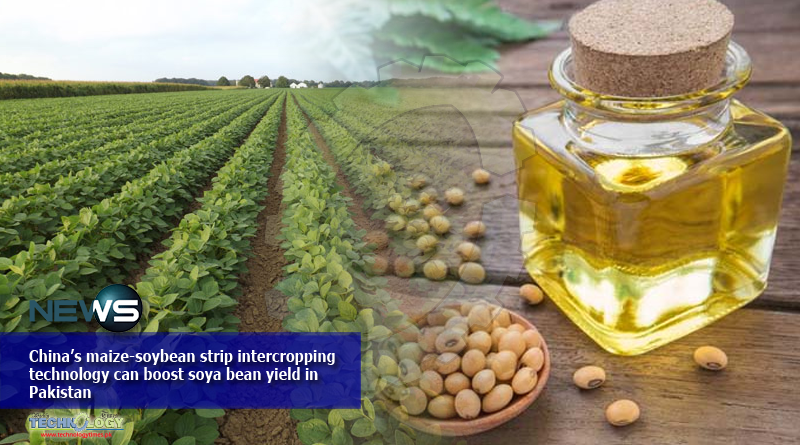China’s maize-soybean strip intercropping technology is very appropriate and reliable to increase the soybean yield in Pakistan.

China’s maize-soybean strip intercropping technology is appropriate all over Pakistan and it can help maize yield just as make an extra soybean gather to decrease Pakistan’s soybean imports and improve the nation’s food security, Yang Wenyu, the educator of Sichuan Agricultural University, Chengdu said.
Prof Yang Wenyu built up this innovation and offered liberal help to two Pakistani understudies of his college who are utilizing and advancing this innovation in their old neighborhood. “There’s an absence of soybean plantation in Pakistan.
We are happy to offer help to assist Pakistan with overcoming any issues between residential creation and imports,” Yang Wenyu said.
It’s he who at first defined acquainting this innovation with Pakistan. His group has been supporting the two students Muhammad Ali Raza and Sajad Hussain to make exhibitions in Pakistan both actually and monetarily the entire time since 2018.
The utilization of maize-soybean strip intercropping innovation in Pakistan has hypothetical and commonsense premise. To start with, Pakistan has a huge populace while the zone of arable land is restricted. It has the interest to create intercropping to grow two harvests together.
Second, Pakistan appreciates plentiful daylight, which is an ideal regular condition for soybean’s development. In addition, in the intercropping fields, maize can conceal soybean to diminish high normal temperature’s effect, and nitrogen obsession by soybean can advance maize’s development consequently. The yields in this model resemble close accomplices that help out one another to make guard harvests.
Determined by Yang Wenyu, by utilizing maize-soybean strip intercropping innovation, the yield of maize can arrive at 10,500 kg for every hectare with an extra 1,350 to 1,650 kg/ha soybean creation in Pakistan’s inundated zones.
In rainfed regions, the creation of maize and soybean can ascend to 6,000 kg/ha and 4,500 to 1,500 kg/ha individually. At present, maize is developed on a territory of about 1.3 million hectares in Pakistan.
Along these lines, the country’s maize yield can be ensured and extraordinarily expanded. All the more significantly, Pakistani ranchers can collect extensive soybean in the interim. That will create sizeable financial advantage for Pakistani individuals.
From the start there were a few questions about the innovation’s exhibition on the grounds that numerous neighborhood ranchers had not seen this sort of cultivating model previously. “For whatever length of time that they adhere to our specialized directions to plant the two harvests, this innovation makes certain to work out,” Yang said with certainty.
“All things considered numerous nations are looking into intercropping. In any case, over the globe, our maize-soybean strip intercropping might be the main developed intercropping framework that is well-furnished with all-around advancements of field setup, treatment, bug control, and so forth and advanced on such a huge scope.”
Other than Pakistan, it likewise has been acquainted with Africa and Europe, for example, Ghana and Sweden. Yang Wenyu’s group is working with Swedish University of Agricultural Sciences to advance the innovation in European nations.
In Pakistan, so far four exhibits have been organized independently in Bahawalpur, Chakwal, Islamabad, and Layyah. Yang Wenyu’s group is helping out Pakistan’s National Agriculture Research Center and PMAS-Arid Agriculture University to fabricate high return exhibitions.
